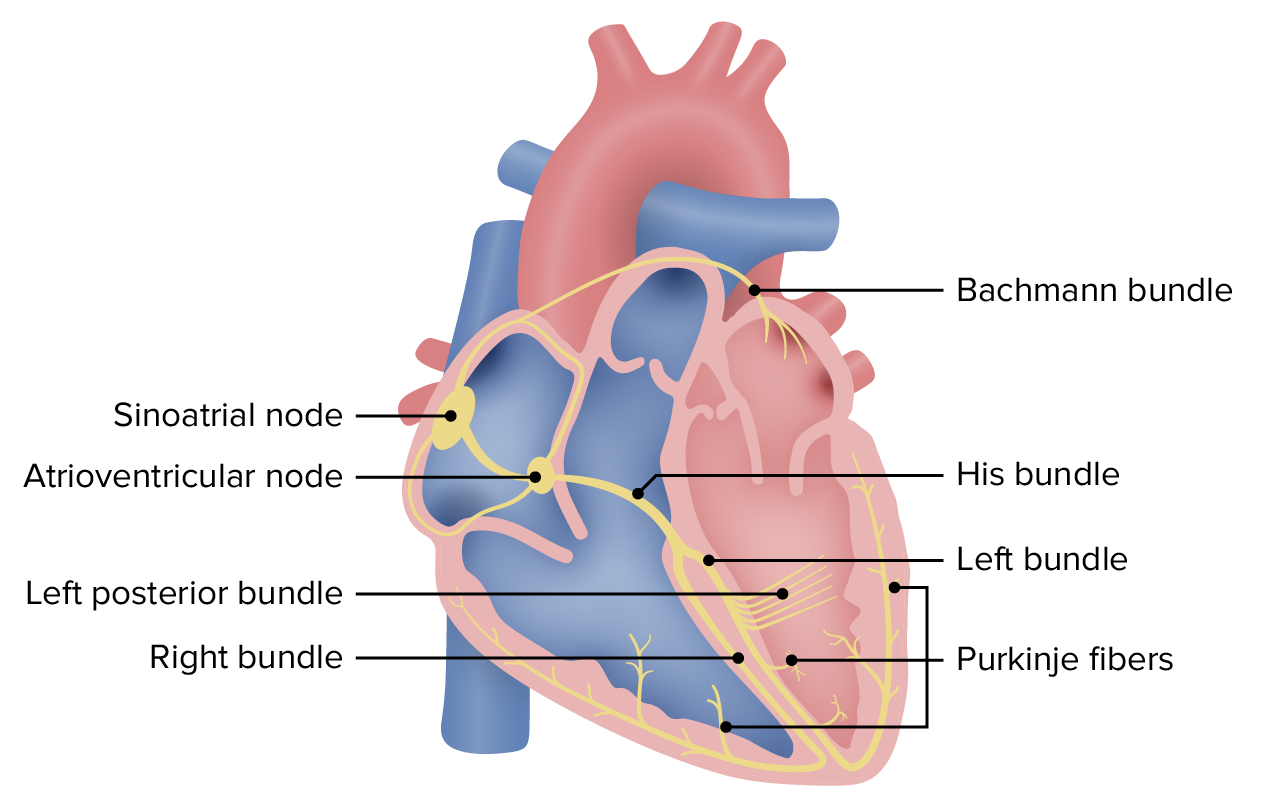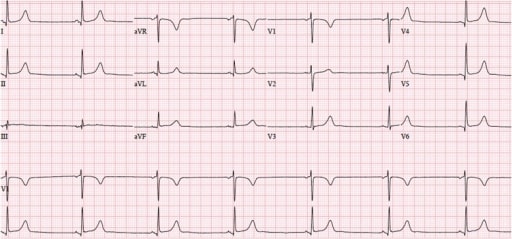Playlist
Show Playlist
Hide Playlist
Cardiac Arrhythmia: The Electric System of the Heart
-
Slides CardiacArrythmia CardiovascularPathology.pdf
-
Download Lecture Overview
00:00 it all begins with knowing the foundation. This is your conduction system of the heart no need for me to go into this in greater detail apart from the fact that there is the SA node. Pay attention to that, right atrium. What wave? P. I want you to go next to the AV node. The time that it takes to go from SA to AV, what interval is this? PR interval. What time have you memorized? 0.12 to 0.2 seconds. Good. From this, I want you to take a look at the bundle branches. You tell me. All I am doing is pointing out things that we have discussed already and now you can actually visualize it. Tell me about the left bundle and right bundle branch, which depolarizes first physiologically? Left bundle branch. How can you confirm that? Second heart sound. What is it? A2, P2. What does that mean? Aortic followed by pulmonic. Are you putting things together? Good. I want you to give you a patient a disease such as left bundle-branch block. If it is a left bundle-branch block, then you tell me what kind of split of S2? Good. Paradoxical split. 01:06 What if it was the right bundle-branch block? Is it a fixed split or widened split? Widened split. If you don't know the difference, that is okay. That's a lot of information. Go back and review the difference between a fixed split most common diagnosis there, atrial septal defect. This is widened split with the right bundle-branch block. If you are good with those conduction systems, we are good. The only thing that I wish to point out to you? EC versus the AV node there. That AV node and on that wall. If you are passing an impulse anywhere apart from that AV node, then this would be known as what? An acessory pathway. Welcome to WPW. Okay. And we will walking through these later as well. So every single slide, every single piece of information that you are going to work with me here, you give it a clinical tag. 01:57 If you don't, maybe perhaps you let it go for another time.
About the Lecture
The lecture Cardiac Arrhythmia: The Electric System of the Heart by Carlo Raj, MD is from the course Arrhythmias: Basic Principles with Carlo Raj.
Included Quiz Questions
Which of the following conditions involves the closure of the pulmonic valve before the aortic valve?
- Left bundle branch block
- Right bundle branch block
- Ventricular septal defect
- Inspiration
- Tetralogy of Fallot
Which of the following conditions leads to a widened split in the second heart sound?
- Right bundle branch block
- Ventricular systole
- Hypoplastic right ventricle
- Tetralogy of Fallot
- Atrial fibrillation
Customer reviews
5,0 of 5 stars
| 5 Stars |
|
1 |
| 4 Stars |
|
0 |
| 3 Stars |
|
0 |
| 2 Stars |
|
0 |
| 1 Star |
|
0 |
Great integration of concepts in EKG, heart sounds, etc. Dr. Raj does not disappoint!





